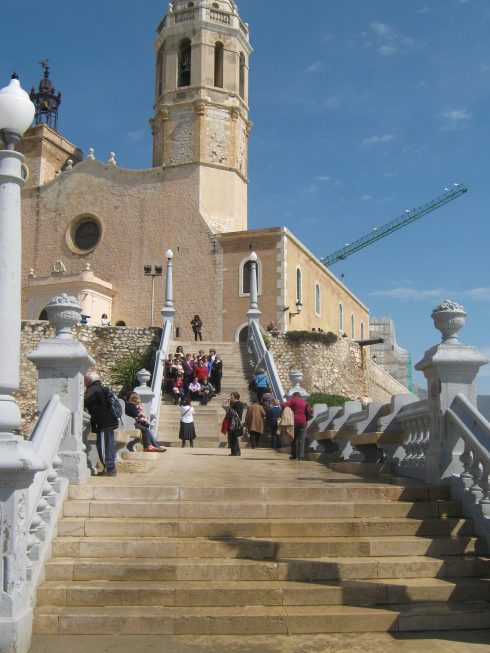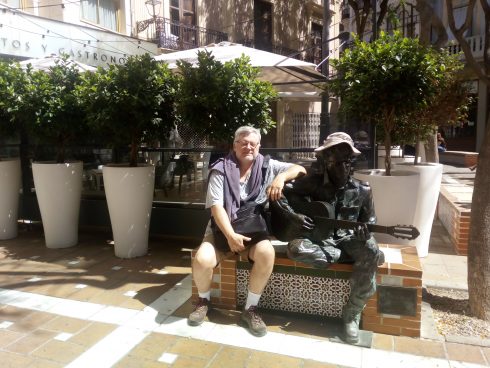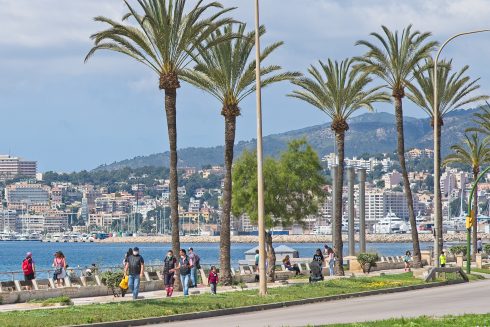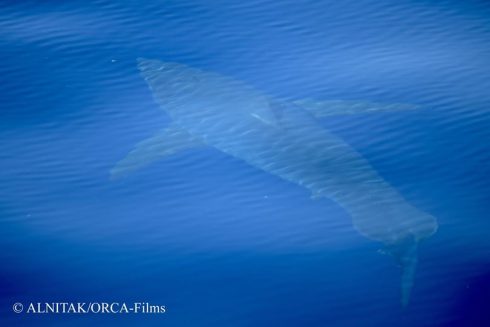Finally we realised an old ambition, to visit the Sad Hill cemetery, where the final shoot-out takes place in The Good, the Bad and the Ugly (1966).

As in the film there were three of us and as it’s clear that Sergio Garcia was the good, Thelma and I argued bitterly about the other two roles.

Sergio explained that the valley was suggested by a Spanish collaborator of Leone’s, Antonio Perez Giner, who had worked nearby on a film called The Castilian, an attempt to exploit the success of El Cid.

Using filters, the lush green of Burgos was faded and a closer approximation to New Mexico was achieved.
Sergio and his friends had the idea to recover the site and restore it to its former glory in the summer of 2013. By March 2014 they had overcome the bureaucratic challenges and on 3rd October 2015 the first visits took place.

Things then moved fast as a documentary called ‘Sad Hill Desenterrado’ (Unearthed) not only got them onto Netflix but also a video call from Clint Eastwood himself.
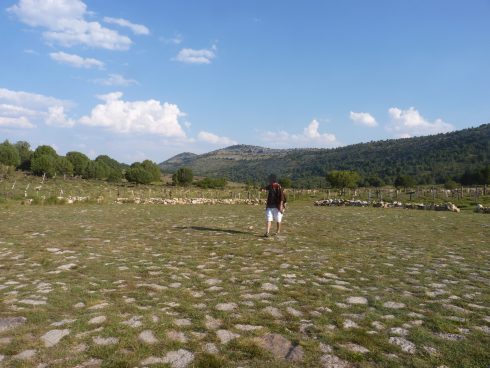
The authorities finally woke up, and now the destination features prominently on the brochures of the nearest town Santo Domingo de Silos, famous for the Gregorian chants of its monks.
Today school trips visit the site and there is always movement, sometimes led by Sergio, suitably apparelled. The approach from Silos has been improved, you can now make it by car, and as Sergio pointed out, and as we saw for ourselves, there are always visitors.

When we were there about 12 people listened in as Sergio brought the famous scene to life, something he can also do in English by the way, while four people sheepishly attired themselves with ponchos and pistols, waiting for us to leave.
Sergio, who can also provide accomodation, can be reached through his website: www.laestaciondelriolobos.com

They no longer offer tombs for adoption, but there are always novelties, such as the flower-decked tomb for the recently deceased Ennio Morricone.
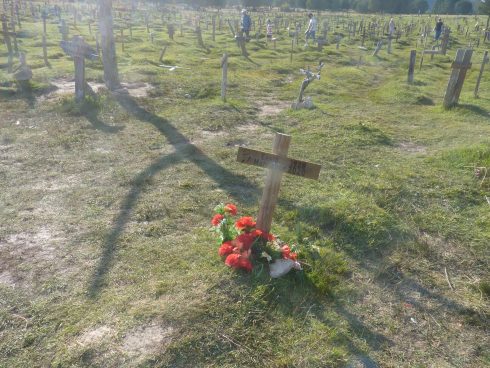
Despite all the publicity that Almeria gets for the trilogy, the last third of the film in fact takes place in Burgos.
The bridge that Tuco and Blondie blow up during an American Civil war battle, was built especially for the explosion over the River Arlanzón in Burgos province by Spanish army engineers.
However, when it came to blowing the bridge the Spanish army Captain in charge didn’t warn Sergio Leone, and just blew it up without any cameras rolling. The army was so repentant with what had been done that the bridge was rebuilt, only to be blown up again two weeks later.
With a much bigger budget, following the success of the first two parts, the third and last part of the trilogy (hence the name ‘trilogy’) was largely shot in the badlands of Almeria with 1,500 Spanish soldiers as extras. The prison camp ‘Betterville’ was inspired by the actual Confederate prison camp of Andersonville, where thousands of Union prisoners died, and based on steel engravings of Andersonville dated from August 1864.
Andersonville prison gave the English language the word ‘deadline.’ Its origin was a line beyond which Union prisoners, if they crossed it, were shot dead.
Today junior executives are shot dead (or the equivalent), if their reports are not in on time.
Back to Burgos, the town being shelled while goodies and baddies and uglies fight out their own battle was at Covarrubias.
In the Valle de Tierra of Carazo, also in Burgos, the military hospital was the Monasterio de San Pedro de Arlanza.
The American Civil War Langstone Bridge Battle site, with the trenches to the right of the road, has largely disappeared, and nobody seems keen to rebuild and blow it up again.
One kilometre further on are the ruins of the Monastery of San Pedro de Arlanza, which was the San Antonio Mission in the film. Carrying on, and just before the second bridge over the Arlanza River at Fuente Tubilla, is a road to the left that goes towards Contreras.
Back in Almeria, the opening scene of the film was shot at Camino de la Rellana, and at Caserio del Campillo de Doña Francesca is Steven’s house, where he is killed by the sadistic Angel Eyes (Lee Van Cleef), although the interior was filmed at Cortijo de la Hoya Altica.
Las Salinas is the spot where Blondie and Tuco meet the Union army, while at El Tablazo we can find the place where Blondie dumps Tuco in the desert. At Cabo de Gata are the famous dunes where Clint Eastwood is forced to walk in the desert by Eli Wallach as punishment, before they become intimate best friends.
The railway station, from where Tuco and Eastwood catch their train, was at La Calahorra, Granada, although a kilometre of track was also built, along with a ranch, at Hazas Blancas in Almeria, and a town was built at Gérgal.
The monastery where Tuco meets his brother was the Cortijo de los Frailes, Cabo de Gata. Apache Canyon was in fact Cortijo Monterreal, and near Rodalquilar, was the Castle of San Ramón, a Confederate fort in the film.
Later they visit Cortijo de los Frailes at Los Albaricoques as well as Cortijadas del Higo Seco, where Shorty was hanged, before moving into the desert of Tabernas, including Rambla Indalecio and Rambla Otera (where Eastwood and Wallach share out the bounty).
Cortijo de los Frailes has its own true, violent story, which was adapted by Federico Garçia Lorca for his play ‘Blood Wedding’. In 1928 the owner offered a large dowry for his younger daughter. His elder daughter and son in law tried to trick him out of the money. However, on her wedding day the bride attempted to run away with her cousin. The plotters shot the cousin in the head and the younger daughter was half-strangled. Very Spanish.
Click here to read more News from The Olive Press.



